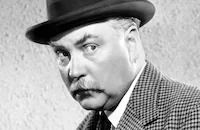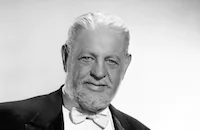The Blue Bird

Brief Synopsis
Cast & Crew
Walter Lang
Shirley Temple
Spring Byington
Nigel Bruce
Gale Sondergaard
Eddie Collins
Film Details
Technical Specs

Synopsis
After Mytyl and her brother Tyltyl trap a rare bird in the royal forest, Mytyl selfishly refuses to give the bird to her sick friend, Angela Berlingot. That night, Mytyl is complaining to her parents when word comes that war has been declared and her father has been summoned to protect the frontiers. The children then go to bed, where Mytyl dreams of the Fairy Berylume, who sends her and Tyltyl off to find the blue bird of happiness. Tylette, the treacherous family cat, and Tylo, the loyal family dog, go along to keep them company and Light shines in to to show them the way. They begin their search in the past, where the children come to the graveyard in which their Grandpa and Grandma slumber. Their grandparents awake to greet them, but no blue birds are to be found in the past, and so, prompted by Tylette, the children continue their search in the land of Mrs. and Mr. Luxury. Soon discovering that happiness lies not in riches, the children begin to long for their parents, and with the help of Tylo, escape from the land of Luxury. Tylette then ventures into the forest where, hoping to thwart the children's quest, she admonishes the trees to terrify them into returning home. The trees conspire with wind and fire to kill the children, and in the ensuing storm, Tylette perishes while the children escape to visit the Kingdom of the Future to search for the blue bird. In the future, they meet the unborn children of the world waiting for Father Time to take them to Earth in his ship of silver sails. Finally returning home, Mytyl awakens to learn that a truce has been declared and finds the blue bird in her very own home. Filled with joy, Mytyl presents the bird to Angela, who experiences a miraculous recovery. As Angela fondles the bird, it flies away to freedom, but Mytyl assures her they will always be able to find it again.

Director

Walter Lang
Cast

Shirley Temple

Spring Byington

Nigel Bruce

Gale Sondergaard

Eddie Collins

Sybil Jason

Jessie Ralph
Helen Ericson
Johnny Russell

Laura Hope Crews

Russell Hicks
Cecilia Loftus
Al Shean
Leona Roberts

Gene Reynolds
Stanley Andrews
Frank Dawson

Sterling Holloway

Thurston Hall
Edwin Maxwell
Herbert Evans

Brandon Hurst
Keith Hitchcock
Tommy Baker
Dorothy Joyce
Billy Cook

Scotty Beckett

Juanita Quigley
Payne Johnson

Ann Todd
Diane Fisher
Dorothy Dearing
Claire Du Brey
Dewey Robinson
Buster Phelps
Alice Armand
Eric Wilton
Alec Craig
Otto Hoffman
Imboden Parrish
Eddy Waller
Edward Earle
Paul Kruger
James Blaine
Harold Goodwin
Dick Rich

Dickie Moore
Crew
Robert Bischoff
Gene Bryant
Walter Bullock
Richard Day
E. H. Hansen
Roger Heman
Wiard B. Ihnen
Natalie Kalmus
Thomas Little
Gene Markey
Arthur Miller
Alfred Newman
Ernest Pascal
Ray Rennahan
Geneva Sawyer
Fred Sersen
Gwen Wakeling
E. Clayton Ward
Darryl F. Zanuck

Videos
Movie Clip



Hosted Intro
Film Details
Technical Specs

Award Nominations
Best Cinematography
Best Special Effects
Quotes
Trivia
Considered Fox's answer to MGM's Wizard of Oz, The (1939), the film was an expensive failure and marked the end of Shirley Temple's unimpeachable star power. Audiences found the idea of Shirley playing a nasty character hard to swallow.
Gale Sondergaard was originally cast as the Wicked Witch in 'The Wizard of Oz' but instead took the more glamorous role of Tylette the Cat in this film.
The blue bird of the title was paid $50 a day, and flew away from a Los Angeles aviary soon after the movie was finished.
Notes
Material contained in the Twentieth Century-Fox Produced Scripts Collection at the UCLA Theater Arts Library indicate that Darryl Zanuck suggested Bobs Watson for the role of "Tyltyl"; Gene Lockhart play "Daddy Tyl"; Joan Davis for "Tylette"; Jessie Ralph for Angela's mother; Anita Louise for "Light"; Zeffie Tilbury for "Granny"; George Barbier for "Grandpa"; Andy Devine for "Cold in Head"; and Burton Churchill for "Time." A Hollywood Reporter production chart adds Nancy Kelly to the cast, but her participation in the released film is unconfirmed. A contemporary article in AC notes that fifteen sound stages were used in shooting this picture, and the filming of the red room scenes presented difficulties as far as Technicolor process was concerned. News items in Hollywood Reporter add that the film was shot on location around Lake Arrowhead, CA. A news item in Hollywood Reporter noted that the film was budgeted at $2,000,000. The picture received Academy Award nominations in the Cinematography (Color) and Special Effects (Photographic Effects, Fred Sersen, Sound Effects, E. H. Hansen) categories.
An unidentified contemporary source in the AFI Library noted that Disney also bid for the rights to the Maeterlinck play. In 1918, Famous Players-Lasky Corp. made another version of the Maeterlinck play, directed by Maurice Tourneur and starring Tula Belle and Robin Macdougall (see AFI Catalog of Feature Films, 1911-20; F1.0394), and in 1976, George Cukor directed Elizabeth Taylor, Jane Fonda and Eva Gardner in a Russian-American version also entitled The Blue Bird.













